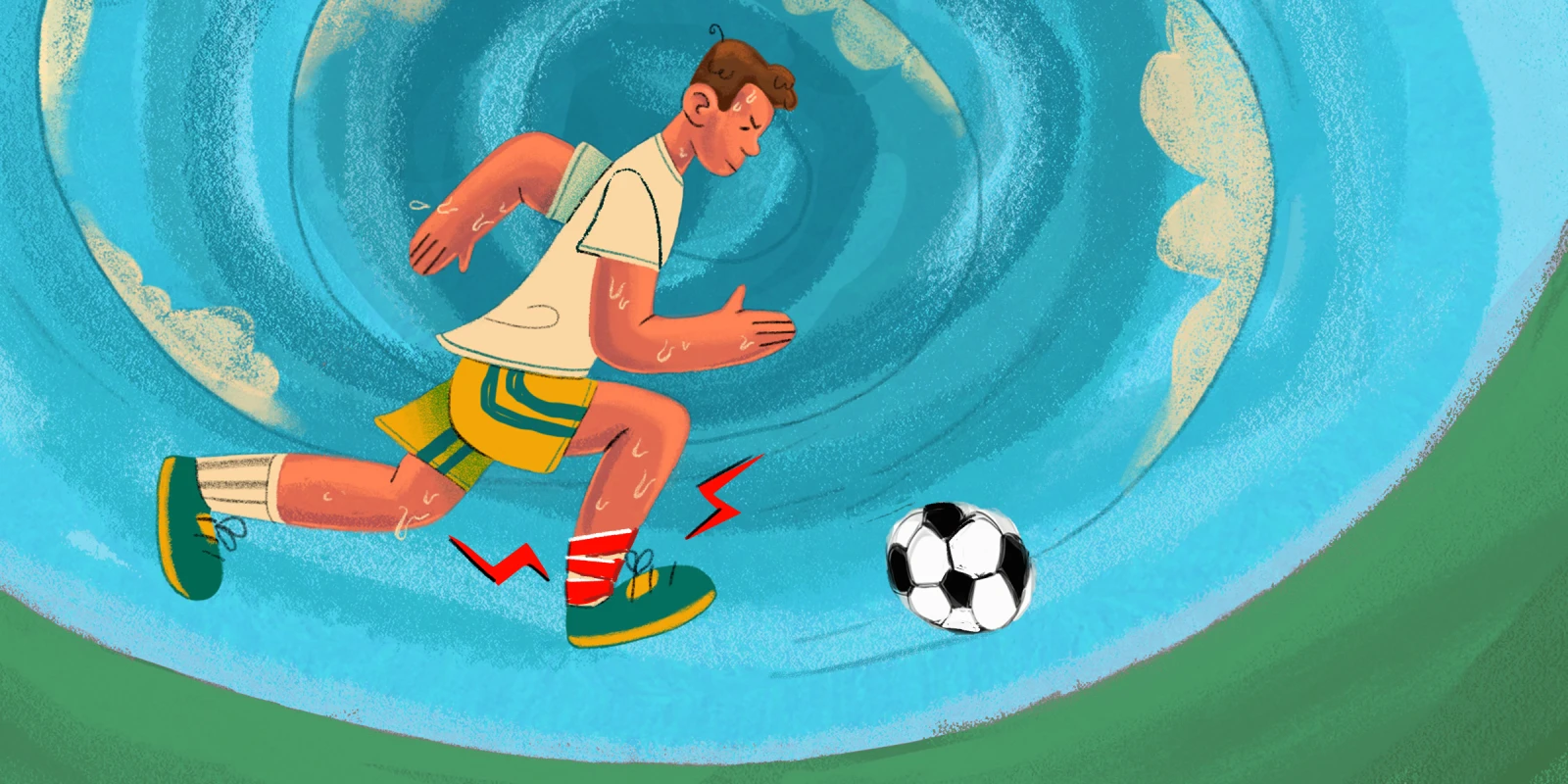“Can’t we heal him faster?”
I was sitting across from a teenage soccer player and his mother. His ankle was not fractured. It was swollen after an opponent stepped on him.
As I discussed conservative management centered around rest, the sullen 15-year-old nodded attentively. His mother shook her head, barely hiding her frustration.
“He just recovered from a knee sprain and a pulled hamstring. He has a soccer tournament this weekend. He can’t miss that much time.”
While wrapping a bandage around his ankle, I asked about his athletic endeavors.
“Well, I play on my high school varsity team this fall after school and my soccer club teams year round.”
I was concerned about the series of lower extremity injuries he had sustained this year. I re-emphasized his need for full recovery from this ankle sprain considering his intensive year-round soccer schedule.
To my surprise, the 15-year-old nodded knowingly, while his mother appeared ready to leave the room.
This patient’s story is not unique. Early sports specialization among young athletes in the hopes of achieving an elite level of sport has become more common. This has not only contributed to the increase in overuse musculoskeletal injuries but also psychological stress and burnout.
Of the estimated 7.2 million high school athletes in the U.S., there are 2 million injuries and 500,000 health care visits annually. Within that population, athletes who engage in early sports specialization are at higher risk for overuse injuries, such as muscular strain, sprain, stress fractures, ACL injuries, Osgood-Schlatter disease, and osteochondritis dissecans.
Early sports specialization refers to intensive training in a single sport for more than eight months per year, at the expense of other pursuits before the age of 16. This often occurs in young athletes who experience early success in a singular sport and start more intensive training. Opportunities for specialization have started earlier, with the development of travel youth sports leagues for athletes as young as 7 years old.
There is little evidence to support the idea that early sports specialization prior to puberty contributes to the achievement of elite collegiate or olympic level ability. If anything, collegiate athletes benefited from avoiding early sports specialization, as cross-training in multiple sports contributed to a more diverse physical and mental skill set.
Early sports specialization increases risk for total injury and overuse injury. Even compared with peer athletes playing a similar number of total hours of sport, those who specialized in a single sport were nearly twice as likely to experience overuse injury. Repetitive motions using a limited set of muscles, compared with diversified movements through cross-training, increases the injury risk for specialized athletes.
Early sports specialization is both time and resource intensive. Participation in club sports that provide training nearly year round costs upward of $1000 per month to cover equipment, training, tournament fees, league dues, apparel, travel, and accommodation. Naturally, with such heavy time and financial involvement, parents of specialized youth athletes are often deeply involved in their child’s sport. Positive parental involvement is not only beneficial to children but desired by youth athletes to contribute to their emotional well-being. However, over-involvement with a focus on achievement, outcomes, winning, and aggressive coaching from parents creates a stressful environment for youth athletes that can reduce enjoyment of their sport. Athletes who specialize in a single sport are not only at risk for increased stress from over-involved parents, but also at increased risk for psychological burnout and early retirement from sport entirely.
Nine months later, I saw the now 16-year-old soccer player in our office for a respiratory illness. As we were wrapping up, I asked about his soccer pursuits.
To my surprise, he had stopped playing year-round club soccer but was planning on returning to his high school team. He developed a stress fracture five months following our visit. He started rock climbing regularly to keep busy outside of soccer.
“I really like it.”
I did not ask if he planned on returning to year-round soccer. I did not ask if he felt less stress. I did not ask what his mother thought about this. I do wonder if he is happier now.
Have you had patients going through early sports specialization? Share your experiences in the comment section.
Nishant Pandya is a third-year pediatrics resident at Yale pursuing a career in primary care pediatrics.
Illustration by Diana Connolly and April Brust






